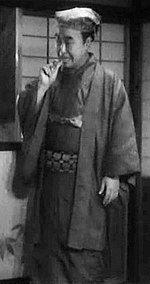Daisuke Katō
Daisuke Katō was born in Asakusa, Tokyo, Japan on February 18th, 1911 and is the Japanese Actor. At the age of 64, Daisuke Katō biography, profession, age, height, weight, eye color, hair color, build, measurements, education, career, dating/affair, family, news updates, and networth are available.
At 64 years old, Daisuke Katō physical status not available right now. We will update Daisuke Katō's height, weight, eye color, hair color, build, and measurements.
Born as Tokunosuke Katō to a theatrical family, his older brother was the actor Kunitarō Sawamura and his older sister the actress Sadako Sawamura. He joined the Zenshinza Theatre Company in 1933 and appeared in a number of stage and film productions under the stage name Enji Ichikawa, including Sadao Yamanaka's Humanity and Paper Balloons and Kenji Mizoguchi's The 47 Ronin. After spending the war in New Guinea, he returned to Japan and signed with the Daiei Film studio, appearing now under the name Daisuke Katō.
In addition to appearing in traditional jidaigeki roles, notably as one of Kurosawa's Seven Samurai, Katō became a popular everyman in contemporary shōshimin-eiga movies. His transfer to Toho in 1951 was an astute career choice, as he emerged as one of their most prolific performers; by the late 1950's he was headlining minor films and co-starring in major ones, including their Company President (Shachō) comedies. Toho leveraged Katō's cherubic appeal, featuring him heavily in promotional materials, and his celebrity grew beyond the typical status of a supporting player.
His 1961 book about his wartime experiences, Minami no shima ni yuki ga furu (Snow in the South Seas), was adapted by Toho as a showcase for Katō, who was top-billed, paired with major studio comic actor Junzaburō Ban (who received the only other solo screen credit), and supported with guest appearances by A-list Toho stars Hisaya Morishige, Tatsuya Mihashi, Keiju Kobayashi, and Frankie Sakai. The book later became an NHK television drama, a stage play, and a second film.
